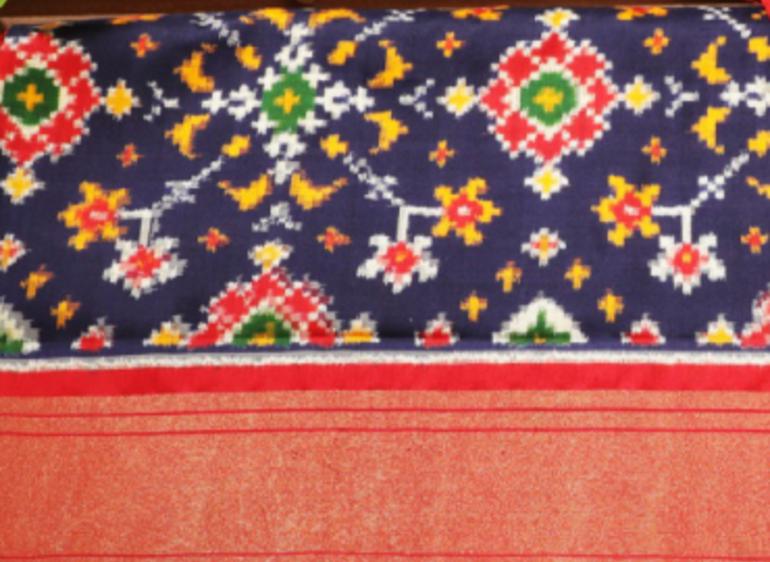Ikat forms the base of India's cultural fabric that extends to not one but many a region. With strong roots across the nation, it has many diverse and distinct branches. From Odisha to Gujarat to Telangana, the weaves hold within its folds tales as old as time. While Ikat is said to have originated in the islands of Indonesia, throughout history India developed its indigenous Ikat weaving techniques. A rich amalgamation of culture and craftsmanship, the legacy of Ikat continues to live and flourish throughout the world, even today.
Although its roots spread out across the length and breadth of our country, its core foundation remains intact. The motifs that are a mainstay element of this weave can be classified into three categories, including abstract, environmental and geometric. And each of these categories have multiple sources of inspiration taken from its place of origin, its inhabitants and its surrounding landscape. Geometric motifs are made up of stripes, checks, chevron and diamond patterns, abstract motifs constitute blurry waves and lines in a blend of colours and environmental motifs are the designs that draw inspiration from flora, fauna and everyday events.

Precision results in perfection aptly describes this complex and age-old weaving technique. What sets Indian Ikat apart is that its tie and dye technique employs a resist dyeing process of the yarn before the weaving process. It is distinguished by the way the yarns are bound together before dyeing to create different pattern formations. The process of tying and dyeing is repeated multiple times in the exact same position to bring to life a range of awe-inspiring patterns in a multitude of colours. This technique can be in 2 different ways which are known as the single Ikat and double Ikat. The single Ikat technique is where only either the warp or weft carries the dyed pattern, and the other is a solid colour. The pattern becomes visible as the weaving progresses. The double Ikat technique is when both the weft and warp are dyed before weaving, and the pattern is formed on their cross-section. It consumes more time and requires advance skill due to its intensity and intricacies.
The Ikat weaving techniques from Patola, Pochampally and Sambalpuri are closely guarded family traditions that have been handed down from generation to generation. Dyeing and weaving these sarees require patience, dexterity of the hand, mathematical precision and vivid imagination, making it one of the most highly prized fabric worldwide. Here's what makes each of these styles unique and special:
1. Patola Ikat (Gujarat) - Also known as the Patan Patola, this highly complex double-Ikat weave features grid outlines and bold geometric designs. The motifs used are centuries old and are inspired by the regions flora and fauna.
2. Pochampally Ikat (Telangana) - With origins from one of India's most ancient weaving clusters, this double Ikat weave is renowned for its intricate and symmetric designs made with natural dyes, and the high quality of silk fabric used.
3. Sambalpuri Ikat (Odisha) - Referred to as 'Bandha' by the rural artisanal community that weaves this wonder, it can be recognised by hazy borders and circular, feather-like and curvilinear patterns which are achieved through several dye baths.

The origin of the word Ikat can be traced to the Malay-Indonesian word 'Mengikat' which means to tie a bundle of yarn or threads. Though this treasured textile has travelled across the globe, it first appeared in India during the 7th century, where old frescos at Ajanta and Ellora caves show figures wearing garments with Ikat patterns.
At Sundari Silks, we take immense importance to the indigenous weaving techniques and crafts of India and do our best to preserve and promote them. Our repertoire of Ikat weaves extends beyond the quintessential saree to ethnic ensembles for men and kids along with accessories and home decor pieces.





